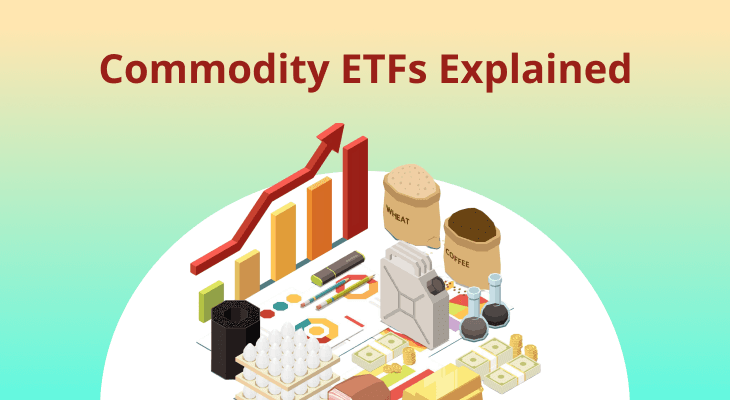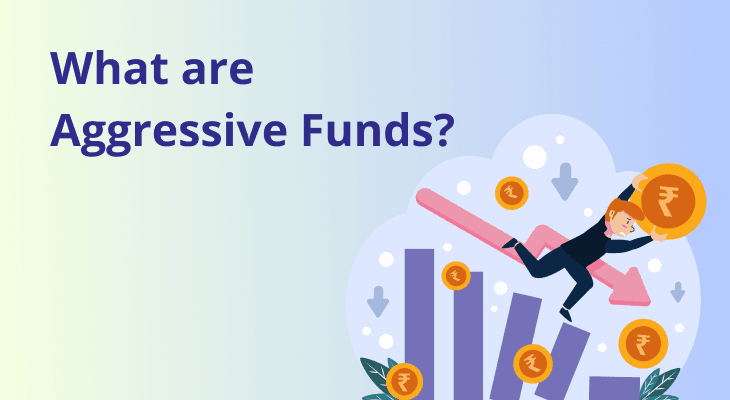
A Comprehensive Guide to Gilt Mutual Funds in India
In the vast ocean of various types of mutual funds, Gilt mutual funds are a distinctive category that primarily invest in government securities, commonly known as "gilts." These funds provide investors with an avenue to participate in government debt instruments, offering a unique investment proposition.
Key Aspects of Gilt Mutual Funds
Definition
Gilt mutual funds exclusively invest in government securities issued by central or state governments. These securities are considered low-risk, making gilt funds a conservative investment option.
Risk And Returns
Gilt funds are generally perceived as low-risk due to the government backing; however, they are not entirely risk-free. Interest rate fluctuations can impact returns. While they provide stability, returns might be moderate compared to higher-risk instruments.
Performance
Gilt fund returns are influenced by factors such as prevailing interest rates, economic conditions, and monetary policies. While they provide stable returns, you should be mindful of the potential impact of interest rate changes.
Investing In Gilt Funds
Investors can participate in gilt funds by purchasing units through mutual fund houses. The fund manager strategically allocates the portfolio to government securities, aiming to optimise returns while managing risks.
Types of Gilt Mutual Funds
Long-Term Gilt Funds
These funds invest in longer-tenure government securities, offering potentially higher returns over an extended period. Investors with a substantial investment horizon may find these funds attractive.
Short-Term Gilt Funds
Short-term gilt funds focus on government securities with shorter maturities. They provide a balance between stability and liquidity, making them suitable for investors with a moderate risk appetite.
Advantages of Gilt Mutual Fund Investments
Investing in gilt mutual funds offers a range of benefits, making them an attractive choice for certain investors seeking stability and income. Here are the key advantages:
Government-Backed Security
Gilt funds primarily invest in government securities, providing you with a level of safety and security. These securities are backed by the central or state government, minimising credit risk.
Stable Returns
Gilt funds are known for their stability, particularly in comparison to other mutual fund categories. The conservative approach of investing in government securities aims to provide consistent, albeit moderate, returns.
Low Default Risk
Since government securities are considered among the safest investment instruments, gilt funds carry a low default risk. Investors can rely on the timely payment of interest and principal amounts.
Ideal For Risk-Averse Investors
Gilt funds are well-suited for risk-averse investors who prioritise capital preservation and are more focused on stability than the potential for high returns. It acts as a protective anchor in a diversified portfolio.
Predictable Interest Income
Investors in gilt funds can enjoy predictable interest income, as the interest rates on government securities are known at the time of investment. This predictability aids in financial planning.
Diversification Tool
Gilt funds serve as effective diversification tools within an investment portfolio. Combining them with other asset classes helps spread risk and create a balanced investment strategy.
Hedging Against Market Volatility
During periods of market volatility, gilt funds can act as a hedge. Their stability and lower susceptibility to market fluctuations make them a valuable component for risk management.
Long-Term Investment Potential
For investors with a long-term investment horizon, gilt funds offer the potential for wealth accumulation through the compounding of stable returns over time.
Alignment With Specific Financial Goals
Gilt funds can be aligned with specific financial goals where stability and preservation of capital are paramount. Examples include funding education expenses, retirement planning, or creating an emergency fund.
Factors to Consider
Interest Rate
Assess the prevailing and anticipated interest rate scenario. Gilt mutual funds in India are sensitive to interest rate changes, impacting their returns. A thorough understanding of interest rate trends helps in strategic decision-making.
Investment Horizon
Define your investment horizon clearly. Gilt funds are well-suited for longer-term investors who can weather short-term fluctuations. Short-term investors may face volatility due to interest rate movements.
Risk Tolerance
Evaluate your risk tolerance. While gilt mutual funds are generally low-risk, they are not entirely immune to market fluctuations. Understanding and aligning your risk tolerance with the fund's characteristics is crucial.
Expense Ratio
Understand the annual fee charged by the fund house, including management and operational costs. A lower expense ratio is generally more favourable for investors as it directly impacts overall returns.
Economic Indicators
Stay informed about key economic indicators, government policies, and budgetary allocations. Gilt funds are influenced by these factors, and a holistic view of the economic landscape aids in making informed investment decisions.
Inflation Considerations
Consider the prevailing inflation rate. Gilt funds, while offering stability, should ideally provide returns that outpace inflation. Ensure that the fund's historical performance aligns with your expectations regarding inflation-adjusted returns.
Fund Manager's Track Record
Evaluate the track record of the fund manager. A skilled and experienced fund manager can navigate market conditions effectively. Review their past performance and approach to managing gilt funds.
Tax Implications
Understand the tax implications of investing in gilt funds. Gains from gilt funds are subject to taxation. Being aware of the tax structure helps in optimising overall returns and financial planning.
Portfolio Diversification
Consider how gilt funds fit into your overall portfolio. While they offer stability, a diversified portfolio may include various asset classes to spread risk. Align your gilt fund investment with your broader diversification goals.
Economic Cycle Analysis
Conduct an analysis of the economic cycle. Gilt funds may perform differently during economic expansions and contractions. Tailoring your investment to economic cycles can enhance overall portfolio performance.
Risk Factors Associated with Gilt Funds
Interest Rate Risk
Gilt funds are susceptible to interest rate fluctuations. When interest rates rise, bond prices fall, affecting the fund's net asset value (NAV). Investors should be mindful of this inherent risk.
Credit Risk
While government securities are considered low-risk, there is still a minor credit risk. Investors should stay informed about the creditworthiness of the government and monitor any changes.
Inflation Risk
Inflation can erode the real returns of gilt funds. While these funds provide stability, you will need to assess whether the returns adequately outpace inflation and fit within your financial objectives.
Global Economic Conditions
Gilt funds can be affected by global economic trends. Investors should keep an eye on international factors that may indirectly influence the Indian economy and, subsequently, gilt funds.
Performance Metrics for Gilt Funds
Modified Duration
Modified duration measures the sensitivity of a bond's price to changes in interest rates. Understanding the modified duration helps investors gauge the interest rate risk associated with the fund.
Yield To Maturity (YTM)
YTM represents the total return anticipated on a bond if held until its maturity. For gilt funds, YTM provides insights into the potential returns based on the current market conditions.
In Conclusion
Investing in gilt mutual funds in India can offer the right balance between safety and returns. As you explore this avenue further, understanding the dynamics of government securities, assessing risk factors, and aligning investment strategies with financial goals become vital. While gilt funds provide stability, you should conduct thorough research, assess them on various parameters as mentioned in this article, consider the associated factors, and stay tuned to economic indicators and market conditions for a well-rounded investment approach.
SIPs let you invest small amounts regularly, making it easier to stay consistent with your goals. With time, your money grows faster through compounding, helping you get the most out of your investments. Try our SIP Calculator to see how your money can grow and make smarter plans for your future.
FAQ
What are Gilt Mutual Funds?
Gilt mutual funds are investment instruments that primarily invest in government securities issued by central or state governments in India. These funds offer a relatively low-risk avenue for investors.
How do Gilt Funds Generate Returns?
Gilt funds generate returns through interest earned on the government securities they hold. The returns are influenced by prevailing interest rates and the overall economic environment.
What are the Risks Associated with Gilt Funds?
Although they are considered low in risk, gilt funds are susceptible to interest rate fluctuations. Changes in interest rates can impact the fund's net asset value (NAV) and returns.
Are Gilt Funds Suitable for Short-term Investors?
Gilt funds are generally more suitable for long-term investors as they may experience volatility due to interest rate movements, which can affect short-term returns.
How is the Expense Ratio Calculated in Gilt Funds?
The expense ratio is calculated by dividing the total expenses of the fund by its average net assets. It represents the percentage of an investor's funds used to cover the fund's operating costs.
What Factors Should I Consider Before Investing in Gilt Funds?
You should consider factors such as the prevailing interest rate environment, your investment horizon, risk tolerance, economic indicators, inflation, the fund manager's track record, tax implications, and portfolio diversification.
Can Gilt Funds Provide Protection Against Inflation?
Can Gilt Funds Provide Protection Against Inflation?
How Often Should I Review My Gilt Fund Investments?
You should regularly review your gilt fund investments, especially during changes in economic conditions, interest rate movements, or significant shifts in the fund's performance. Periodic assessments help ensure alignment with financial goals.


